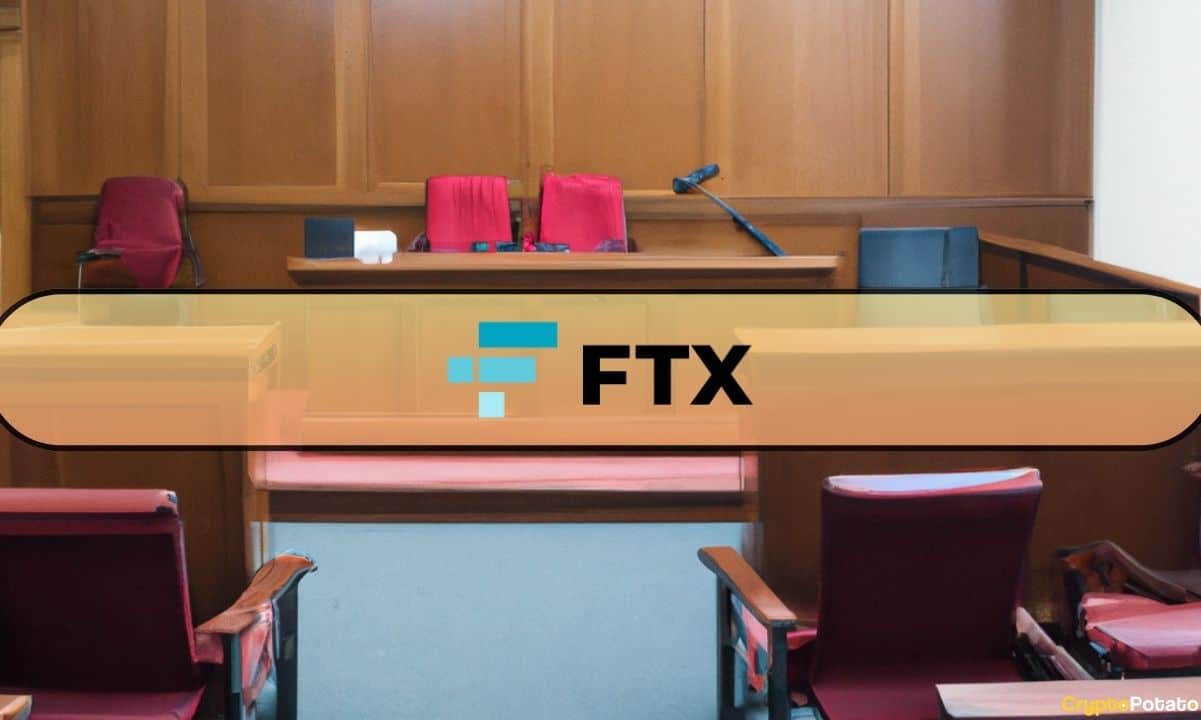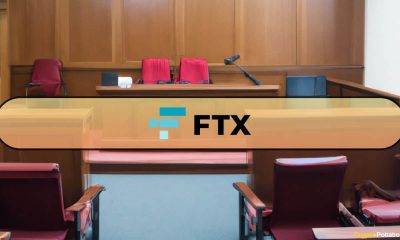Cryptocurrency
Singer Vérité’s fan-first approach to Web3, music NFTs and community building

Carving out a sustainable career as an independent musician is no easy feat. The competition is fierce, support can be hard to find, and earning a living without the financial help of a major record label is an uphill battle. Yet, for those who are able to build a loyal fanbase, the freedom of complete creative control can be liberating.
Technology has long proven to be a potential friend to those musicians willing to embrace it, and nonfungible tokens are the latest innovation that many tech-savvy artists have begun incorporating into their careers. But NFTs remain both controversial and experimental, especially among the mainstream, and music NFTs are still relatively niche.
One artist who has cracked the code to maintaining a successful career as an independent musician is American singer Vérité, who has racked up hundreds of millions of streams without the support of a record label since releasing her first single, “Strange Enough,” in 2014.
After finding success and touring internationally, Vérité became one of the earliest musicians to experiment with NFTs in February 2021. Since then, she has built a strong Web3 community and had several successful high-profile drops, including releasing 1/1 NFTs, selling the master rights to her music, fractionalizing song royalties on the blockchain and giving NFTs to concert attendees. She has done all this while still retaining her dedicated non-Web3 fans, many of whom have little to no interest in crypto.
How does one walk this fine line and successfully integrate Web3 into their career without alienating their existing, perhaps skeptical, fans? Magazine sits down with Vérité to find out.
Don’t over-rely on Web3
For many musicians, Web3 is an exciting frontier filled with new possibilities for fan engagement and revenue generation. However, Vérité believes it is important that artists have diversified revenue streams and marketing strategies and don’t fall into the trap of assuming that the hype surrounding anything, especially NFTs, will last forever.

Building a music career in Web3 is “a bit of a double-edged sword,” Vérité tells Magazine. While it can help bring people together, “it becomes a negative when maybe artists limit themselves to only utilizing those tools and only existing within those communities, not really having the foresight that there was a hype cycle that then broke and these paths to monetization closed.”
“My focus is ‘How do I build a career that can withstand trend cycles, that can refocus on the foundation of my career while trying to push forward to build better?’ because we recognize that a lot of these systems are extremely broken.”
Protect and respect fans
Not every fan wants to join their favorite artist on their Web3 journey, and that’s fine, according to Vérité. When she first started releasing NFTs, she heavily emphasized that she was simply experimenting with the technology. “I was very, very clear that I don’t care if you come with me on this experiment — this is an experiment for me,” she states.
Read also
Vérité actually took it one step further, actively encouraging fans not to join her. “A lot of my communication with them was, ‘Don’t buy this. Don’t participate unless you are fully educated and willing to fully educate yourself and take on the risks.’” Even now, she still tells her fans that they should never feel pressured to participate in anything Web3-related.
“More than monetizing, it’s really protecting the people who have supported my career for the last eight years,” Vérité emphasizes.
It’s clear that not everyone is sold on the power and potential of blockchain. The bear market certainly hasn’t helped the space’s reputation either, with the collapse of crypto exchange FTX making mainstream media headlines and the prices of even blue-chip NFTs crashing 95% from their bull market peaks.
“If you go on my Discord — and I do tag everyone and say, ‘What do you think about crypto and NFTs?’ — people are not jazzed. Most of them, honestly. It’s just general disinterest,” Vérité explains. But it’s not necessarily that her fans actively hate crypto. “I’m finding that people don’t have a desire to do something new because they don’t see a problem, right?”
According to the singer, “NFTs, Web3, how it’s been marketed out to the masses is also wholly unpalatable really to non-tech-native fans.” Instead, she offers the following advice:
“I would more so recommend people to frame it as utilizing tools because it’s a weird market, and it’s hard to justify some of the scams and the negative aspects that can cause real harm to someone who isn’t knowledgeable or educated on those things.”
Offer an option, not a requirement
Instead of forcing fans to join her on-chain, Vérité instead focuses on building experiences with a Web3 element that is present but optional. She describes her approach as offering a “door” for fans to enter, one where blockchain functionalities can be unlocked to further enhance the fan experience — but where fans will still enjoy the experience regardless of whether they open the door:
“Do you need to jump the technological hurdle in order to have the experience, right? Or is it just a door? If it’s a door, you can talk about it because it’s not a burden.”
“For me, it’s really trying to consider, ‘What is the experience that we’re offering, what are the actual viable use cases of blockchain technology that we can tack on that aren’t burdensome?’” she says.
One example is “The Vérité Crewneck,” a tech-enabled sweatshirt the singer dropped in late 2022 in collaboration with IYK, a company working with brands, artists and creators to develop phygital experiences. The sweatshirt has a near-field communication, or NFC, chip embedded in the sleeve, which can be scanned to access exclusive content and unlock an NFT representing a certificate of authenticity.

Vérité explains that fans who bought the sweatshirt received “premier access to the next era of my records.” Buyers could scan the chip with their phones and get early access to music and perks such as behind-the-scenes content. “That was the main value proposition — not a Web3 activation, right?”
But the landing page also features an option to verify the garment, through which curious fans can receive their NFT.
Fans are at the center of it all
Between straight-up telling fans not to purchase her NFTs to offering them experiences where the Web3 option is an added bonus, Vérité’s fan-centric approach has undoubtedly played a significant role in her ability to push boundaries — and see success — in Web3 while still maintaining a loyal non-Web3 fanbase. Or, in her words, “My fans come first, and I don’t have fans just so that I can sell them shit all the time.”
Regarding her long-term hope for the future of blockchain and music, Vérité says her vision is that “we can demystify the black box of data that exists between artists and their fans, that is held by social platforms, ticketing companies, etc., and that blockchain actually does have the ability to make that information transparent so that artists can communicate directly to the people who support them and reward them in long-term scenarios.”
If the hype is to be believed, this dream may one day come true. But based on Vérité’s experience at the forefront of it all, it seems the only way the music-Web3 revolution will be truly successful is if fans are placed at the center of it.
Subscribe
The most engaging reads in blockchain. Delivered once a
week.

Cryptocurrency
FTX Wants to Block Claims from 49 Countries, Including China: Users Rage

Bankrupt crypto exchange FTX is asking the court to greenlight a plan that could potentially deny billions in creditor repayments to users in 49 countries where crypto faces legal restrictions.
This could disproportionately impact Chinese users, who reportedly represent 82% of the affected claim value.
Navigating Legal Minefields in Restricted Jurisdictions
The FTX proposal, detailed in a July 2 court filing, is seeking authorization to designate 49 countries, including China, Russia, Afghanistan, and Ukraine, as “Potentially Restricted Jurisdictions.”
While claims from these regions will be automatically treated as “disputed,” the FTX Trust will first seek legal opinions for each jurisdiction, and in cases where distribution is deemed legally permissible, payouts will proceed.
However, where legal advice indicates distributing funds would violate local laws, the Trust will issue a formal notice to affected creditors. These users will then have a 45-day window to file a formal objection, including submitting it to a U.S. court.
According to the document, if a jurisdiction is ultimately deemed “restricted” and a claimant remains a resident there when repayments are processed, their funds and any associated interest “shall be immediately forfeited and revert to the FTX Recovery Trust.”
The submission has triggered significant backlash from affected users. While the FTX Recovery Trust is positioning it as a legal compliance issue, others argue it raises serious ethical questions.
“FTX accepted users from China when things were fine,” wrote one X user. “Now denying their claims entirely because of ‘restricted jurisdiction’ feels unfair.”
He described creditors from the beleaguered countries as “victims” who still deserved to be repaid.
Another Chinese claimant, going by the username “Will,” also argued forcefully against the rationale:
“While mainland China does not support cryptocurrency trading, residents… are allowed to hold cryptocurrencies… The claims process uses USD for settlement… they are allowed to hold USD overseas. So why isn’t wire transfer settlement supported?”
Meanwhile, others expressed despair, with one user asking, “Is there anything that could be done? Or they just steal all of the money?” FTX creditor advocate Sunil suggested that selling or transferring the claim to someone in an allowed jurisdiction might be a potential workaround.
Ongoing Repayments
While the controversy rages on, other creditors have been making progress with their payments. As per a July 1 update, those with claims under $50,000 have already received 120% payouts, while larger claimants received 72.5% in May. The remaining 27.5% is expected through distributions extending into 2027.
Meanwhile, the fallout from FTX’s 2022 collapse continues to resolve elsewhere, with most celebrity endorsement lawsuits dismissed, though retired NBA star Shaquille O’Neal settled for $1.8 million.
Binance Free $600 (CryptoPotato Exclusive): Use this link to register a new account and receive $600 exclusive welcome offer on Binance (full details).
LIMITED OFFER for CryptoPotato readers at Bybit: Use this link to register and open a $500 FREE position on any coin!
Cryptocurrency
This Critical Binance Metric Suggests Incoming Surprises for Bitcoin: What You Need to Know

Binance’s net taker volume surged past $100 million just ahead of the latest US Nonfarm Payrolls (NFP) report.
Such a trend points to aggressive buying as traders position for a key macroeconomic catalyst.
Binance Sees Aggressive Buy Orders
In its latest analysis, CryptoQuant revealed thaft this spike reflects large market buy orders on Binance, indicating strong bullish sentiment or speculative bets on continued market momentum.
The US labor market report, released shortly after, showed Nonfarm Payrolls increasing by 147,000 in June. This figure exceeded analysts’ expectations of 110,000-118,000. The unemployment rate also fell to 4.1% from 4.2% in May and was the lowest level since February, according to the Bureau of Labor Statistics.
The stronger-than-expected employment data reduces the chances of near-term rate cuts, ultimately backing the Fed’s plan to maintain higher rates to control inflation. Market-implied probabilities now reveal a 95% chance the Fed will hold rates steady at its July meeting, as it rose from 75% before the jobs report was released.
A resilient jobs market has strengthened the US dollar, as expectations of delayed or reduced interest rate cuts make the currency more attractive relative to others.
Historically, strong NFP data and hawkish Fed expectations have weighed on risk assets, including Bitcoin, as a firmer dollar environment tends to reduce the relative appeal of alternative assets.
The combination of Binance’s aggressive buy-side activity and the strong jobs report could pave the way for potential volatility in crypto markets as traders assess the Fed’s policy outlook and the broader macro environment.
After US jobs data beat forecasts, Bitcoin briefly climbed above $110K before retreating to $108.8K.
July Seasonality Fuel Optimism
As per crypto analyst Daan Crypto Trades’ observation, holding above $108K is critical for the leading crypto asset to avoid a downward spiral. He considers a close near the $110K region a healthy sign.
Meanwhile, Matrixport noted that July has historically been a strong month for Bitcoin, as 7 out of the last 10 Julys have closed positively and have an average return of over 9.1%. Supported by the improving Fed outlook and post-July 4 optimism, the next few weeks could offer a final push higher before another round of consolidation. The Greed & Fear Index is also bottoming out, a signal that often precedes upward momentum in Bitcoin’s price.
Binance Free $600 (CryptoPotato Exclusive): Use this link to register a new account and receive $600 exclusive welcome offer on Binance (full details).
LIMITED OFFER for CryptoPotato readers at Bybit: Use this link to register and open a $500 FREE position on any coin!
Cryptocurrency
Chainlink’s Consolidation Echoes Bitcoin’s 2023 As Retail Apathy Meets Whale Hunger

Chainlink (LINK) remains locked in a $12-$15 price stalemate, owing to the continued whale accumulation amid retail disengagement.
On-chain data shows sustained negative exchange netflows of around 100,000 LINK per week, which indicates that whale entities are absorbing sell pressure without significant price disruption.
LINK Faces Critical Test
CryptoQuant stated that this trend contrasts with occasional retail-driven spikes, such as March 2025’s 5 million LINK deposit surge. Retail activity has stayed flat, as evidenced by the daily active addresses hovering between 28,000 and 32,000, while transaction counts remain stagnant at around 9,000 per day. Despite increased oracle utility, retail failed to capitalize on a minor activity bump seen in late 2024.
Whale urgency is evident as exchange withdrawals peaked at 3,000 transactions per day in Q4 2024 and remain elevated, thereby steadily draining exchange reserves, which have fallen approximately 40% year-to-date. Neutral leverage metrics are preventing volatility and have allowed systematic accumulation without triggering a breakout above $15.
A resolution to this deadlock will require a spike in retail participation to ignite momentum or a slowdown in whale withdrawals to weaken accumulation. Until a catalyst emerges, LINK’s structure matches Bitcoin’s 2023 consolidation phase before its surge in 2024.
While this accumulation standoff continues on-chain, Chainlink has been expanding its broader ecosystem through partnerships.
Collaborations With Mastercard and Visa
Last month, the decentralized oracle network partnered with Mastercard to allow 3 billion cardholders to purchase crypto directly on-chain using fiat payments. The collaboration utilizes interoperability infrastructure and Mastercard’s global network to remove barriers to crypto access.
Partners like Zerohash, Shift4, Swapper Finance, and XSwap support liquidity, compliance, and fiat-to-crypto conversion, bridging traditional payments with decentralized finance environments.
Chainlink also completed a pilot under the HKMA’s e-HKD+ initiative with Visa, wherein the duo tested cross-border investment transactions using CBDCs and stablecoins. In the trial, ANZ’s AUD-backed stablecoin A$DC was converted into e-HKD and used to invest in a tokenized money market fund.
Chainlink’s CCIP enabled asset transfers between ANZ’s private blockchain and Ethereum’s public testnet, while Visa’s VTAP managed the token lifecycle. The pilot demonstrated instant, compliant investment fund access, which reduced settlement times from days to just seconds, even on weekends.
Binance Free $600 (CryptoPotato Exclusive): Use this link to register a new account and receive $600 exclusive welcome offer on Binance (full details).
LIMITED OFFER for CryptoPotato readers at Bybit: Use this link to register and open a $500 FREE position on any coin!

 Forex3 years ago
Forex3 years agoForex Today: the dollar is gaining strength amid gloomy sentiment at the start of the Fed’s week

 Forex3 years ago
Forex3 years agoUnbiased review of Pocket Option broker

 Forex3 years ago
Forex3 years agoDollar to pound sterling exchange rate today: Pound plummeted to its lowest since 1985

 Forex3 years ago
Forex3 years agoHow is the Australian dollar doing today?

 Cryptocurrency3 years ago
Cryptocurrency3 years agoWhat happened in the crypto market – current events today

 World3 years ago
World3 years agoWhy are modern video games an art form?

 Commodities3 years ago
Commodities3 years agoCopper continues to fall in price on expectations of lower demand in China

 Economy3 years ago
Economy3 years agoCrude oil tankers double in price due to EU anti-Russian sanctions
























